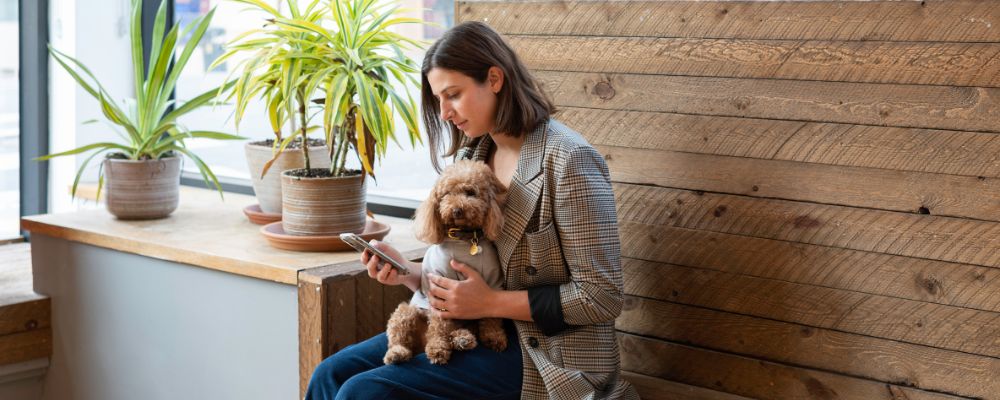Writing your LinkedIn bio can be more stress-inducing than writing your dating bio…
There’s a lot of buzz going around about LinkedIn at the moment. Where is has traditionally been thought of a digital platform for you to load your resume or CV to, in the past two years LinkedIn has really established itself as a social media platform in its own right.
Where once it was a profile, you updated only when you were actively looking for work, it is now a place that users log into on a weekly or even daily basis. They’re using LinkedIn to build meaningful connections, start conversations with industry peers, publish their own thought leadership content, and stay up to date with the latest news and insights within their industry.
As a social media platform, it is unique – the way that we search, connect, and start conversations with people on LinkedIn is closer to how people use dating profiles than traditional social media channels like Facebook or Instagram. And the flipside of that is that people are starting to stress over their LinkedIn bios in a way that can also only be compared to writing dating profiles.
“Should I put a picture of me with my dog, or is that too casual?”, “How much detail should I put in about my previous jobs?”, and “Do I list my hobbies?? Do people want to know that I spend my weekends tending to my bonsai??”
At BeKonstructive Marketing, we manage more LinkedIn accounts – both professional and personal – than any other social media platform. One of the first tasks we do when we onboard a new LinkedIn client is rewriting their personal bio.
We’ve developed a bit of a framework for a winning LinkedIn bio, and in this article, I’m going to share some tips for creating a killer LI bio that everyone would swipe right on…
 You’re NOT writing a CV / Resume:
You’re NOT writing a CV / Resume:
I hinted this in the intro, but as LinkedIn has evolved over the past couple of years, we’ve moved away from the traditional ‘online CV portal’ reputation that LinkedIn has held for the past decade.
They are a social media platform, and on social media we tell stories and have conversations. We don’t “hard sell” and the tone is a lot more conversational. Your LinkedIn profile really should be more like a dating profile, but professional.
So, if your LinkedIn bio is currently a duplicate of your most recent resume you can go ahead and wipe it all. Delete the whole thing – we’re starting with a clean slate.
You’re also not writing a cover letter:
A cover letter is too self-promotional. It talks only about the key strengths that you hold that are specific to the most recent job you applied for. It doesn’t tell your story, and it certainly doesn’t give any meaningful insight into who you are as a professional.
Your bio should tell your career story – it isn’t a hard sell for hiring you. It should mention a few of your career milestones, but only in relevance to plot points throughout your story. How did that milestone change you, what did you realise, what did it enable you to achieve?
You want people to get to know you – in a shifting professional environment where more and more employers are relying on the results of psychometric tests and DISC profiling to determine who they hire – an authentic and engaging story of your professional development is going to get you a lot further than professional brown-nosing ever will.
 What gets you out of bed in the morning?
What gets you out of bed in the morning?
A great bio sells your passion and enthusiasm for the industry you’re in. What gets you out of bed in the morning, what excites you? Why did you start out in this industry, and why are you still here?
What were the career turning points that have directed you to where you are today? What are your personal values and beliefs, and how do they determine the way you approach business?
I’m not talking about religious or political beliefs (although if you feel they are relevant then I would encourage you to include them). I’m talking about a belief in continuous professional development that means you are motivated to keep learning new things. Or valuing human connection and communication above all else, which means your clients can always rely on you to show up to meetings in person.
I’m talking about taking your personal strengths, beliefs, and values – like loyalty, communication, creativity, problem solving, reliability – and giving clear examples of how they translate into your day-to-day work life.
Talking about your approach to leadership and problem solving can also provide great insight into who you are as a professional. Are you a fast thinker, or are you someone who needs to take a couple of days to consider the problem from all perspectives but ultimately comes up with a wholistic solution for a complex problem? Do you lead by example, or are you more hands-on?
How are you making an impact in your industry?
If you want to be thought of as an industry leader, then you need to make an impact. What are you shaking up, and how are you making a difference? It is not enough to list a bunch of Tier 1 / ASX listed companies you’ve worked at throughout your career – I want to know what you’re doing to better your industry. Where are the biggest problems / pain points in your industry and how are you working towards a solution?
I want to know what you’ve got planned for the future of your industry. Not in a “where do you see yourself in 5 years” kind of way, but in a practical and thoughtful way. What change do you want to see, and how are you going to be a part of that change?
 Putting it all together:
Putting it all together:
A great LinkedIn bio is going to flow nicely. It is going to include all the information above, in a really engaging story-like format. It should be enjoyable – exciting even – to read. You have a 2,000-character limit and you should be using all of it. Giving your audience some insight into who you are and what motivates you professionally is more important than giving them a blow-by-blow timeline of your entire professional career.
If it helps, start with the end – think about what your ultimate career goals are, and why. Think about why you want to achieve those things, and what it will mean – what is the impact you’ll be making? Then, work your way backwards – think about what some of the key career milestones you’ve already achieved towards that end goal are, and focus on those milestones rather than the specific jobs and responsibilities. Sprinkle in a bit about how those milestones helped you develop professionally, and how you took those new skills / knowledge into the next step.
Then take one last step backwards and think about what initially drew you to this career or industry? What natural (soft) skills did you already possess that made you the perfect fit for this line of work? Was it your creative thinking, your love of routine and process, the fast-paced adrenaline-fuelled work environment, the human aspect, the complex problem-solving requirements?
Need help writing your LinkedIn bio?
The team at BeKonstructive Marketing help businesspeople from all industries and all levels of management write attention-grabbing LinkedIn bios. You can check out my own LinkedIn bio here for an example of how to put the above advice together, and if you’d like to learn more about how our team of Brisbane copywriters can help you write yours, get in touch here.


